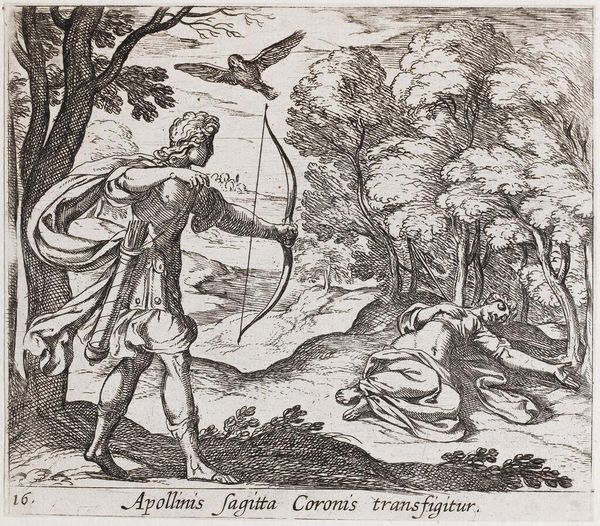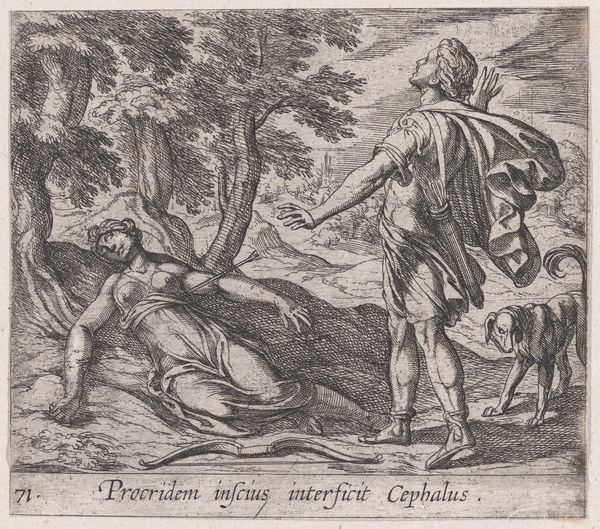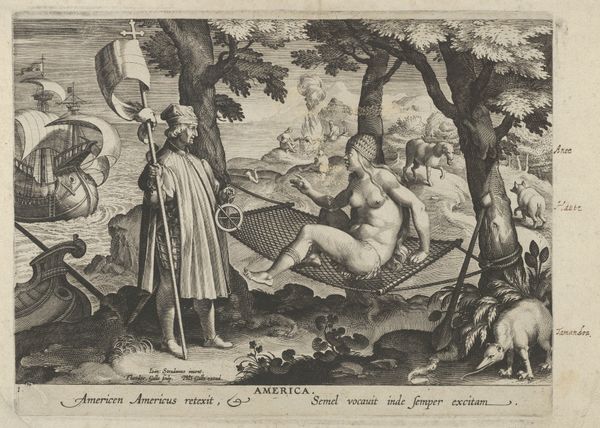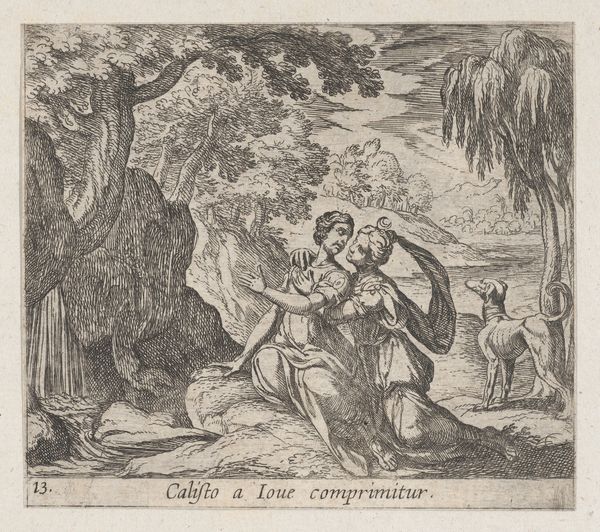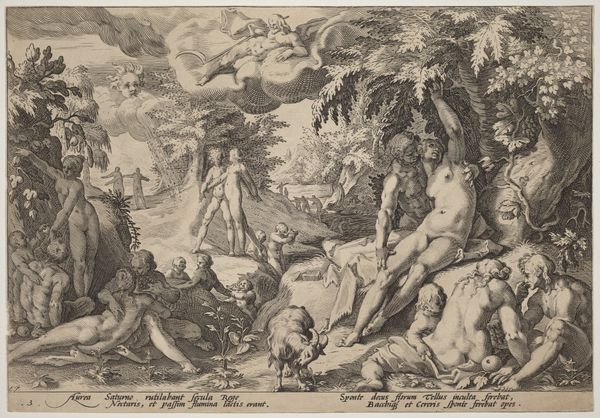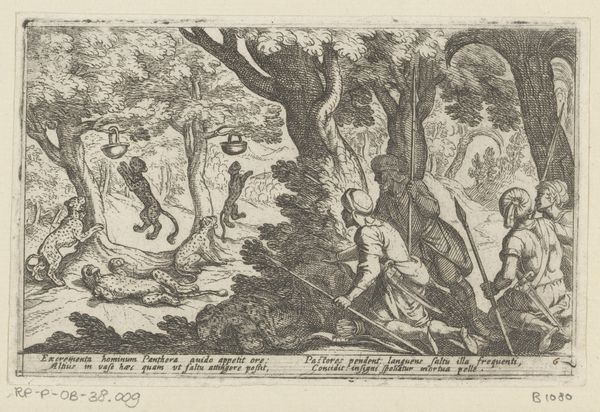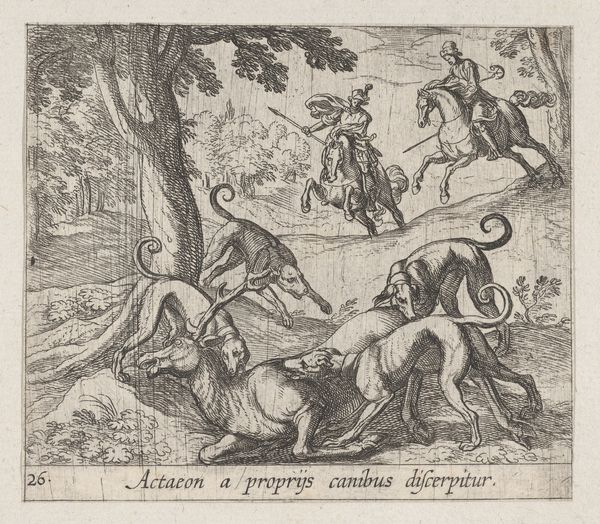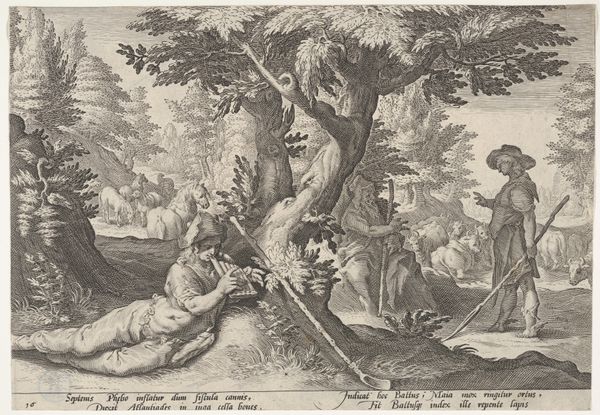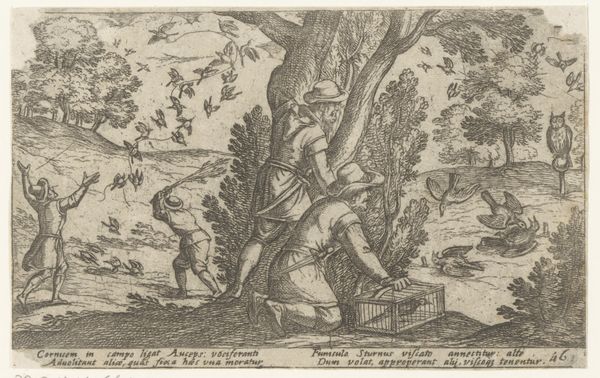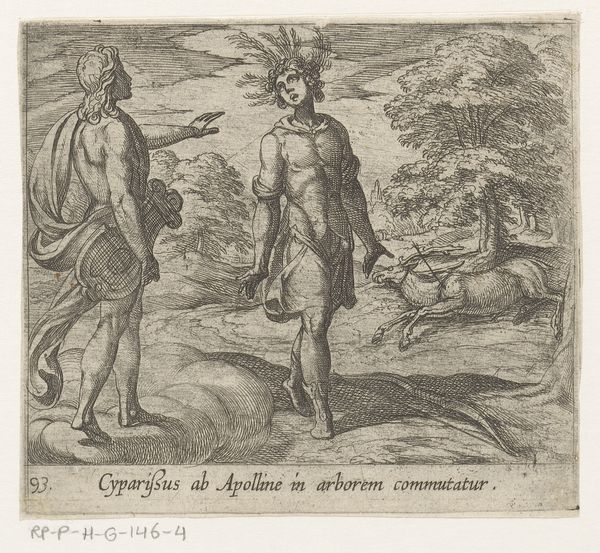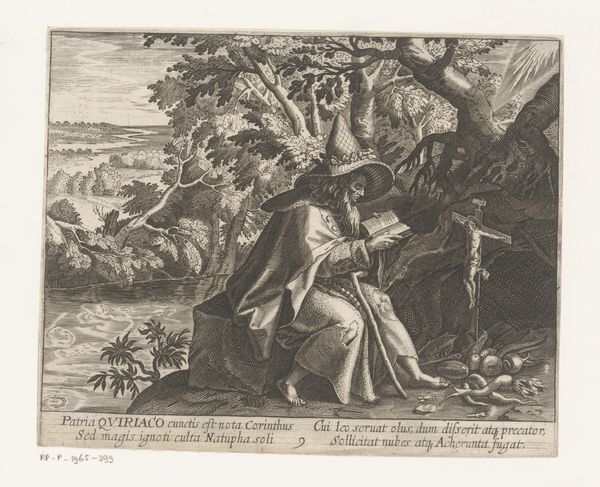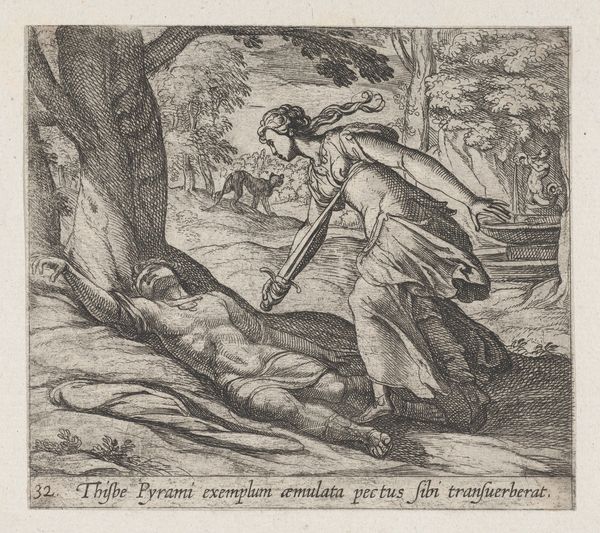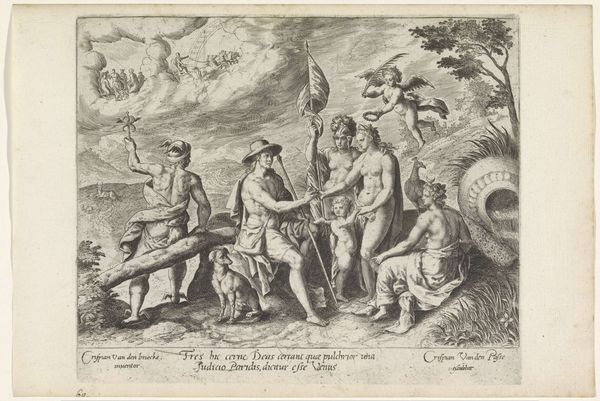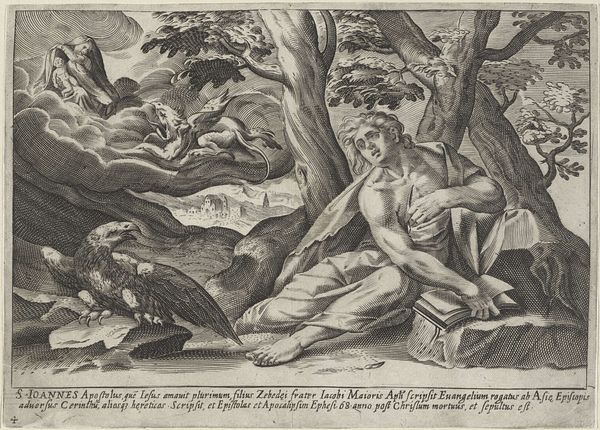
Plate 16: Apollo Killing Coronis (Appolinis sagitta Coronis transfigitur), from Ovid's 'Metamorphoses' 1606
0:00
0:00
drawing, print, engraving
#
drawing
#
ink drawing
#
narrative-art
#
pen drawing
# print
#
pen illustration
#
pen sketch
#
landscape
#
mannerism
#
figuration
#
line
#
history-painting
#
italian-renaissance
#
engraving
Dimensions: Sheet: 4 1/8 × 4 5/8 in. (10.5 × 11.8 cm)
Copyright: Public Domain
Curator: We’re looking at Antonio Tempesta's engraving from 1606, "Apollo Killing Coronis" a print illustrating a scene from Ovid's "Metamorphoses." The piece resides here at the Metropolitan Museum. My immediate impression is how active and visually arresting it is despite the monochromatic scheme and relatively small scale. Editor: Indeed. Notice the visual language here; the composition itself is structured to lead the eye decisively from Apollo, with his drawn bow, to the prone figure of Coronis. The crisp, almost frantic line work really conveys the drama. The tension of the narrative finds its form in these graphic diagonals, wouldn't you say? Curator: Precisely! I’m interested in the iconographic choices Tempesta employs to convey the emotional weight of the story. The raven flying overhead, for example; this carries a loaded symbolism. Ovid’s tale suggests the raven was once white, but punished for revealing Coronis’s infidelity to Apollo. Editor: Yes, and Tempesta subtly positions it almost exactly between Apollo and his victim, as a graphic embodiment of fate or consequence. Observe too, the detailed rendering of the landscape. It feels almost stage-like; providing a very deliberately constructed backdrop for this unfolding drama. This gives it the visual feeling of a morality play being enacted. Curator: I agree. Moreover, let’s remember that this print is part of a series illustrating Ovid’s epic. In the context of narrative art, we could discuss how Tempesta selects, freezes and encapsulates single decisive moments, inviting us to complete the before and after, turning us, in essence, into active participants. Editor: And what does it mean to depict the God Apollo—often associated with order and reason—as a vengeful executioner? It forces us to reconsider these accepted and assigned symbols, especially the destructive nature of godly justice in the face of perceived betrayal. Curator: An incisive point. Considering the linear precision of the engraving process—how each line is so definite—perhaps Tempesta subtly communicates a feeling about fate as relentless, immutable. Editor: A compelling idea! This small, powerful image speaks volumes not only about skill in execution but also on enduring psychological themes. The narrative is more than just an antique tale. Curator: It is; it shows us the powerful means and methods employed to convey a story, with dramatic use of symbol and technique to render this particular vision from Ovid.
Comments
No comments
Be the first to comment and join the conversation on the ultimate creative platform.
